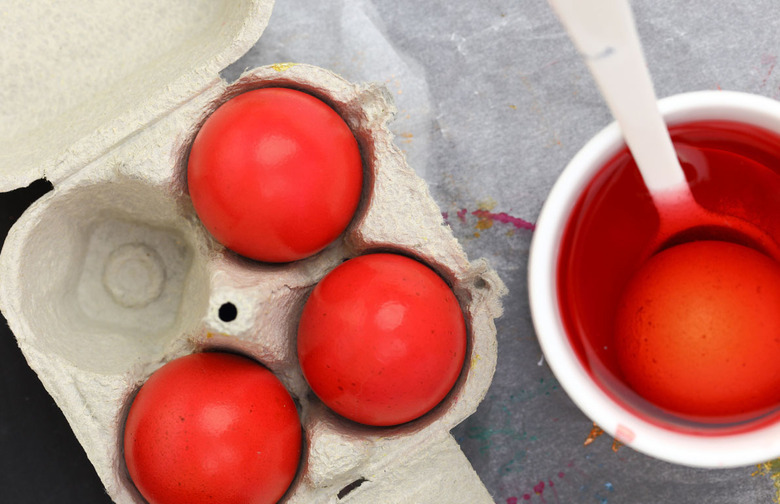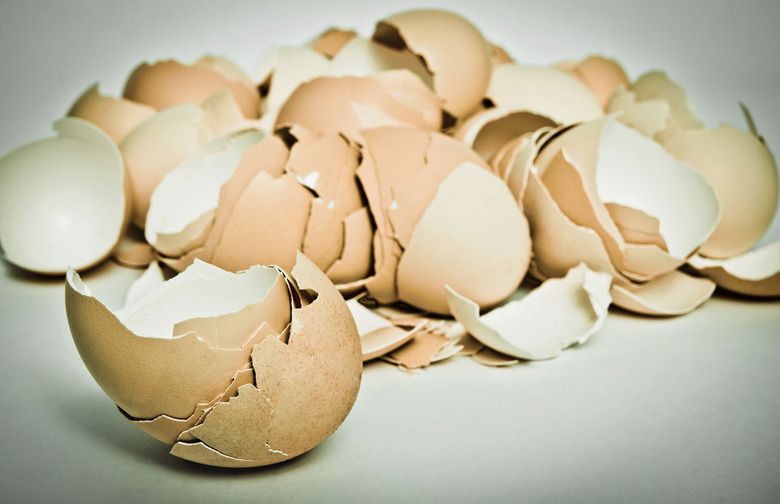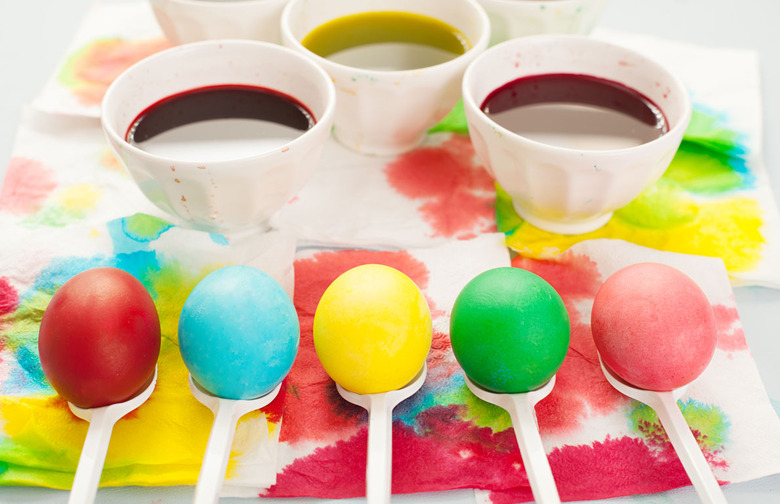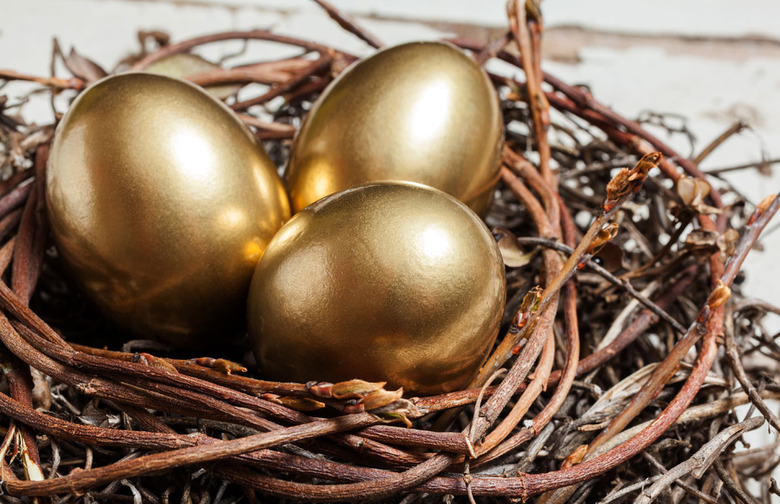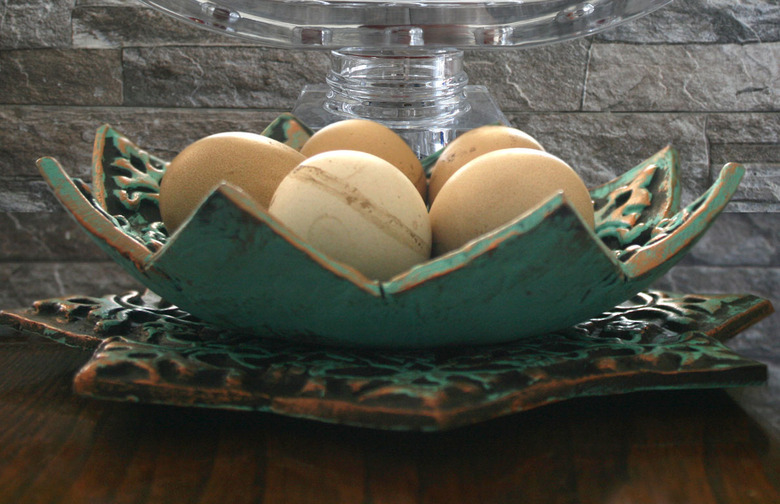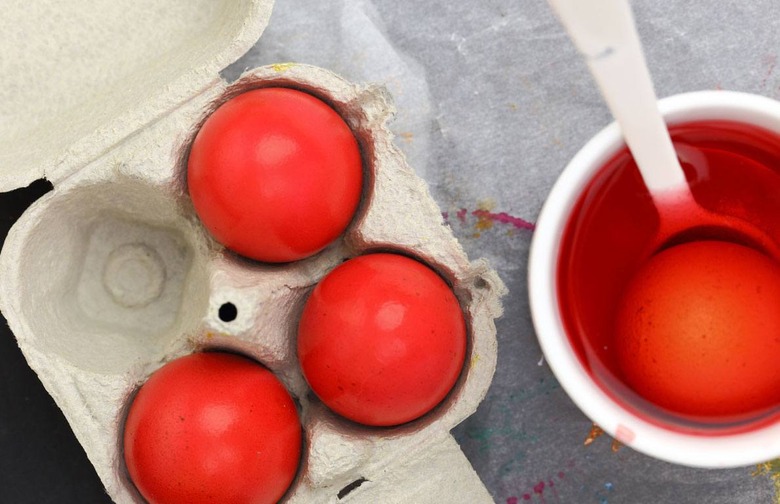9 Things You Didn't Know About Easter Eggs Slideshow
The practice of dyeing Easter eggs dates back as far as the thirteenth century. The thing is, no one is completely sure of where and why this tradition started. While we do know that Christians adopted this practice and applied their own theological symbolism to it, its exact origin story is hazy. To help you better understand why you spend so much time every year decorating Easter eggs, we've rounded up a few facts and theories so you can piece together the history of this brightly colored holiday tradition.
An Ancient Symbol
Pre-dating Christianity, eggs were always representative of new life in pagan religions and have long been associated with the celebration of spring.
Begging for Eggs
Much like trick-or-treaters, children in sixteenth century Northern England and Scotland would go from door to door reciting rhymes in exchange for eggs, cheese, bacon, and other items to add to their families' Easter meals. The practice was called "pace egging." Eggs were also used as Easter offerings or payment, particularly by English peasants.
The Egg Shell
You can't decorate Easter eggs without boiling them first, but did you know that there is a symbolism to the hardened shell? The shell in Christian and Orthodox cultures represents the sealed tomb that held Christ's body. When cracked open, it mimics his resurrection.
A Forbidden Food?
One theory suggests that we dye Easter eggs because they were once a forbidden food during the Lenten season. Believers painted the eggs and ate them on Easter Sunday to celebrate the end of penance and sacrifice.
A Great Gift
King Edward I once ordered 450 eggs to be dyed and decorated with a golden leaf. Why? To give out as Easter gifts, of course!
A Link to Passover
During the Jewish holiday of Passover, roasted or hard-boiled eggs symbolize both fertility and the loss of the two Temples during the Seder. Christianity was derived from Judaism, so it is no surprised that Christians incorporated a part of this tradition during their Lenten time.
Not Just For Easter
Painting eggs is not just a tradition for Easter. During Nowruz, an ancient Iranian celebration that marks the New Year during spring, eggs are painted to represent fertility.
The Red Egg
Easter eggs that are dyed red have a particular significance. It is theorized that red eggs represent Christ's resurrection. In one story, Roman Emperor Tiberius replied to Mary Magdalene's news of Christ's resurrection with: "Christ has no more risen than that egg is red." He was referencing an egg that was on a nearby table, or possibly in Magdalene's hands. After declaring this, it was said that the egg turned red. Another Easter European Christian theory says that when Mary, Jesus' mother, visited his body at the crucifixion, she brought with her a basket of eggs and his blood spilled on them, dyeing them a bright red.
Why Do We Roll Easter Eggs?
This popular Easter activity (a White House tradition) is generally believed to be no more than just a little bit of Easter fun! However, some theorize that it is representative of the stone rolling open to reveal Jesus' empty tomb.
